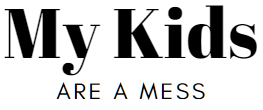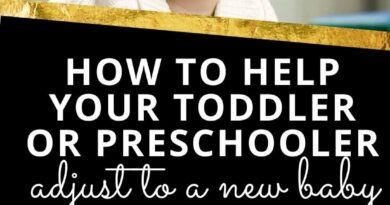What to do When Siblings Hurt Each Other: Toddler & Preschooler Edition
Your kids are both busy with their dollhouse. You turn around to clear the table. And suddenly, your son’s screaming loud enough to wake the dead.
You run over and he shows you the large scratch on his leg. The culprit, his little sister, reaches over to try again.
“No!” You grab her hand away. “We don’t hurt! We use our words!”
Whether it’s unkind words or violent physical behavior, none of us want our children to hurt one another. Our goal as positive parents is to raise moral and upstanding citizens. And that begins at a young age in the home.
But what do you do when your little ones are in a hurtful conflict? When one is crying and feels devalued and disrespected by the other?
It’s hard to think of options when you’re in the moment. One or both children are crying and out for blood.
That’s why you want to plan ahead. Keep reading to stock up on ideas for what you can do the next time your children are hurtful toward one another.
Table of Contents
#1. Be ready to swoop in
Sometimes it’s valuable to let your toddlers and preschoolers try to figure out their differences by themselves. But this isn’t always true.
Is anyone using unkind language, name-calling, hurtful teasing, or physical violence like biting or hitting? As soon as these tactics come into play, you need to intervene.
Even if the situation isn’t escalating, if one sibling is harsh to another, intervene immediately.
Your children need to understand from a young age what is or isn’t tolerated in your household. And if name calling is okay one day, who’s to say that hitting isn’t okay the next?
#2. Don’t play their game
Unless a child is in severe danger, there is no need to swoop in, coddle the “victim” child, and give them the “poor baby” treatment.
This approach teaches your kids lessons that you may not realize and may not intend.
The “victim” might come to believe that the victim will always be saved and protected.
This can lead to their developing a victim complex. Instead of figuring things out for themselves, they might learn to wait for a savior.
And what about the child you just framed as a bully? This child now feels powerful. They might just continue with the aggressive behavior to help themselves feel accomplished.
So how can you stop the aggression without these side effects?
When you intervene, physically step in between the children. Remain calm.
Ask questions that empathize with both children instead of assuming you know who “started it”.
Good leading questions could be, “You both sound upset. Is that right?” “One at a time, can you each tell me what you think happened?”
Ready to help your kids stop squabbling and start getting along?
Download my Sibling Rivalry Troubleshooter free!
#3. Debrief together
Weigh both children’s emotions in the argument.
Don’t side with one child over the other. And don’t tell them that the whole thing is ridiculous.
Take the role of a narrator and let both children know that they’re both right and wrong.
“Emma, you’re mad because Liam used the word stupid. Is that right?That’s not a word we use in this house.
“But Liam, you’re mad because Emma knocked over your tower. You were working really hard on it. And that goes against our rule that we respect each other’s things.
“It looks like both of your feelings were hurt and you both broke house rules. What should we do?”
Now is a good time to help your children learn conflict-resolution skills. Brainstorm ideas together, and continue to objectively report on their ideas.
“Emma, you think we should take all of your brother’s blocks away? Hmm. I think Liam will feel sad if we do that. And you still get to play with your blocks. So that doesn’t seem fair. Any other ideas?”
Discuss the resolution in an even keeled tone. This way you can deescalate the situation and help both children see where they could have made better decisions.
If you see your kids are struggling to come up with some resolutions, don’t be afraid to give suggestions. “What if we both say sorry? And then you can both spend ten minutes helping one another clean up the blocks.”
Have your children work together as a team. It’s a great way to dissolve sibling rivalry and get them to want to help one another.
#4. Discipline in private
Sometimes one child is violent or hurtful in an unwarranted way.
They weren’t provoked, but for some reason they hurt their sibling anway.
In this case, your best bet is to discipline this child in a separate room. There’s no need to further shame or embarrass them by disciplining them in front of a sibling. That just adds fuel to the fire.
Also, when you talk with her in private, you’ll be able to discuss the underlying issue.
Maybe the attack seemed unwarranted, but was really in response to something from three days ago. The issue was never resolved and she’s taking care of unfinished business.
It’s worth taking the time to patiently listen to your children during conflict. This is a great way to understand them and their emotional triggers better.
#5. A stitch in time saves nine
The absolute best way to handle sibling violence is to stop it before it starts.
Use positive parenting in a preventative way. Sort out underlying issues that can cause your kids to lash out at each other.
Remind your kids that they’re all a part of the same family. It doesn’t really matter who’s older or younger. They need to respect each other and figure out how to get along.
More than that, neither child is the boss over the other.
Explain that family rules are created as a family, with mom and dad’s input. It’s the grown up’s responsibility to enforce the rules and to discipline if necessary.
Little ones are often super conscious of who’s “bigger” and who’s “stronger” and who should listen to who.
Remind your children that their only job is to respect one another and they should leave the rest to mom and dad. This helps you to reinforce the family hierarchy and prevent future fights over sibling power struggles.
Ready to help your kids stop hurting each other?
Your child’s screaming and grabbing at a scratch on his leg. His little sister is intent on giving him another scratch.
Hold your little instigator still so she can’t do any more damage. Take a deep breath and help your little ones calm down as well.
Grab the first aid kit and take care of the scratch. And then start mediating.
Why did little sister scratch? Did something happen first?
What does she need to do next time? What could big brother do to help her remember? To stop her from wanting to scratch in the first place?
It’s always upsetting when siblings hurt one another. But when we stay calm, we can use these moments as the learning opportunities they are.



